In an era characterized by rapid digital transformation and the ever-expanding influence of technology, the role of leadership has undergone a profound and dynamic evolution. Today, leadership is not merely about guiding a team or organization; it is increasingly intertwined with harnessing the power of technology to drive innovation, adapt to changing landscapes, and foster organizational growth. In the annals of tech history and leadership, few names shine as brightly as that of Bill Gates.
His journey, akin to an odyssey, stretches from the corridors of Harvard to the global stage of technology and philanthropy. Let’s delve deeper into this captivating tale.
From Birth to BASIC: The Early Days
William (Bill) Henry Gates III made his entry into the world on October 28, 1955, in Seattle, Washington. His father, William H. Gates Sr., was a prominent lawyer. Bill’s mother, Mary Maxwell Gates, was a banking executive and chairwoman of United Way International. In the loving family, Bill was also the only son, with an elder sister named Kristianne and a younger sister named Libby. Following his family’s legacy, he was the fourth in the line of generations to inherit the name William H. Gates.
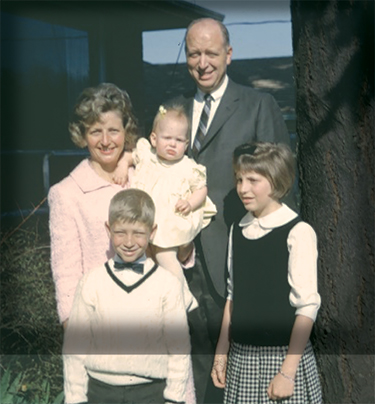
Young Gates exhibited intelligence and curiosity that hinted at his future endeavors. Though he grew up in a warm and loving environment, Gates’ parents kept their kids on their toes, striving for the best in a competitive environment. Be it a game of cards or a swim to the docks, every winner had a reward and the loser a penalty. This environment of healthy competition encouraged the siblings to seek out growth in all forms.
A Boy and His Computer
This youthful intellect was soon to develop more when Gates entered The Lakeside School at age 13. The exclusive preparatory school was instrumental in Bill’s early foray into software. Here, an 8th-grade Gates encountered the Teletype Model 33 ASR terminal, a precursor to personal computers. Right off the bat, Gates was deeply interested in the programming network of the computer, often being excused from math class to pursue this interest. His fascination with the machine only intensified as he developed his first computer programme, a tic-tac-toe implementation that allowed one to play games against the computer.
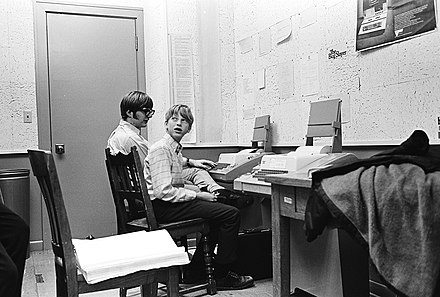
Gates was often joined in his tech-bound endeavours by his three friends, Paul Allen, Ric Weiland, and Kent Evans. Spellbound in a tech fantasy, Gates, along with his schoolmates, started the Lakeside Programmers Club. Though Gates and his friends were initially banned from the Computer Centre Corporation (CCC) for mischievously exploiting the bugs in the operating software to gain extra computer time; after their ban was lifted, this exploitation turned into a new opportunity as the CCC offered them extra computer time in exchange for finding bugs in the CCC software.
Moving steadily with his passion for programming and now proficient in coding, Gates started a venture with Allen called Traf-O-Data. The primary objective was to analyse the data garnered from roadway traffic counters and create reports for traffic engineers. While the company was modest and short-lived, the experience was instrumental for Gates’ later endeavours.
Harvard, Ballmer, and a Life-Altering Magazine
Gates intellect only soared higher when he graduated from The Lakeside School as a ‘National Merit Scholar’ in 1973. Soon after, Gates joined Harvard, which led him to momentarily part ways with Allen. While his brilliance was a stark light against the brick and ivy of Harvard, fate accelerated its future plans. Gates met Steve Ballmer at Harvard, his energetic and boisterous counterpart to his calm demeanor. Ballmer will go on to become the future CEO of Microsoft.
While progressing with his studies in pre-law and mathematics at Harvard, Gates still kept in contact with Allen. During that time, Allen introduced Gates to the 1975 edition of Popular Electronics Magazine, something that was set to change Gates’ life. The magazine featured a one-of-a-kind rudimentary computer device, the Altair 8800. The duo were fascinated by the revolutionary capacity hidden in the primitive computer.
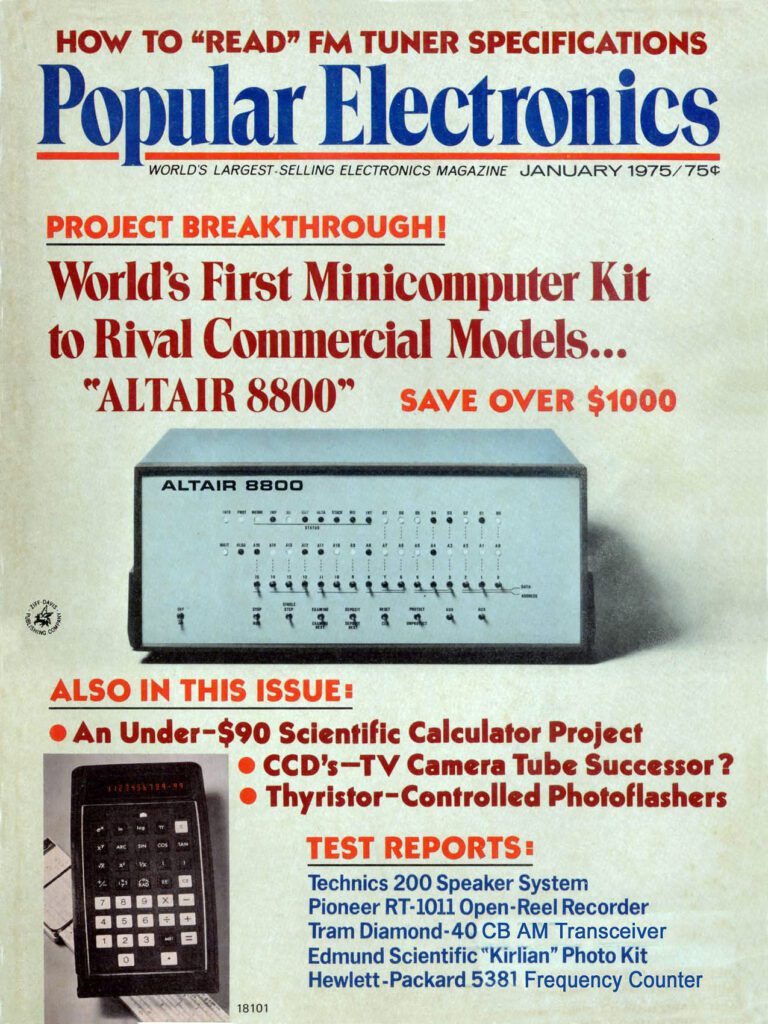
To develop their ideas with Altair, they contacted Micro Instrumentation & Telemetry Systems (MITS), the company that made Altair. In another sly scheme to garner MITS interest, the duo claimed that they were developing a BASIC interpreter for Altair, while in truth they had never used the computer before. In a stroke of fortune, MITS President Ed Robert took an interest and asked them to exhibit their work.
The Microsoft Genesis: More Than Just a Name
After the audacious move of promising the Altair creators a software he had yet to create, Gates, with Paul Allen by his side, plunged into the project. The makeshift office space (a motel room!) buzzed with the sound of keystrokes and frenzied coding sessions. Their hard work culminated in Altair BASIC. Soon after, Allen travelled to MITS’s offices in Albuquerque, New Mexico, to demonstrate the operator. Fate was on their side, and despite never working with Altair, the programme worked perfectly on the Altair 8800. Impressed, MITS offered the duo a partnership and a job offer.
The success with Altair BASIC was the catalyst Gates and Allen needed. Allen joined MITS promptly, and soon after, Gates left Harvard and joined him in November 1975. This is where the roots of Microsoft were first planted and would soon bloom, changing the trajectory of personal computing forever. They opened their first office in Albuquerque. Allen named the partnership Microsoft (then stylized as “Micro-Soft“), a name that, derived from “micro-computer” and “software,” signified their vision. The first employee they hired was their high school friend and collaborator, Ric Weiland.
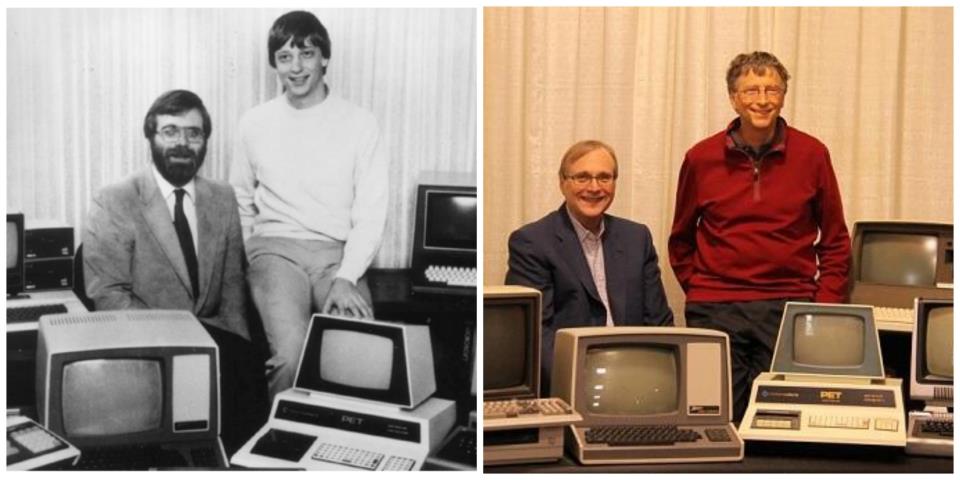
Early Challenges & The Open Letter Controversy
As Microsoft started its journey, it could’ve definitely run smoother than it did. Financial constraints, coupled with the challenge of establishing a new business model centered around software, were daunting. Yet Gates faced every challenge that came head-on.
Gates, ever the visionary, recognized another emerging challenge: software piracy. While Microsoft’s Altair BASIC was popular amongst computer lobbyists, only 10% of BASIC-based Altair users paid for the software. This issue mainly arose due to the pre-market copy of the software that got leaked and was being copied and distributed.
In 1976, Gates penned an “Open Letter to Hobbyists,” emphasizing the value of software developers’ efforts and the damage piracy could inflict. He further pushed that this piracy market could potentially eliminate any future developer from producing or developing better software. This was a controversial stance, earning him both support and criticism from many computer lobbyists. Yet Gates stood true to his stance, and the belief underscored a significant shift in understanding software’s worth.
While the start was rough, the company saw an upward trajectory thereafter. In late 1976, Microsoft became independent of MITS and continued to develop programming language software for various systems. Soon after, the company shifted its headquarters to Washington and grossed $2.5 million in revenue. As the company grew, Gates took over the executive role at age 23. Despite the momentum, Gates was thorough with his work and reviewed and rewrote every line of code that the company produced in its first five years. Gates recruited Steve Ballmer in 1980, who left his MBA programme at Stanford University to join the company.
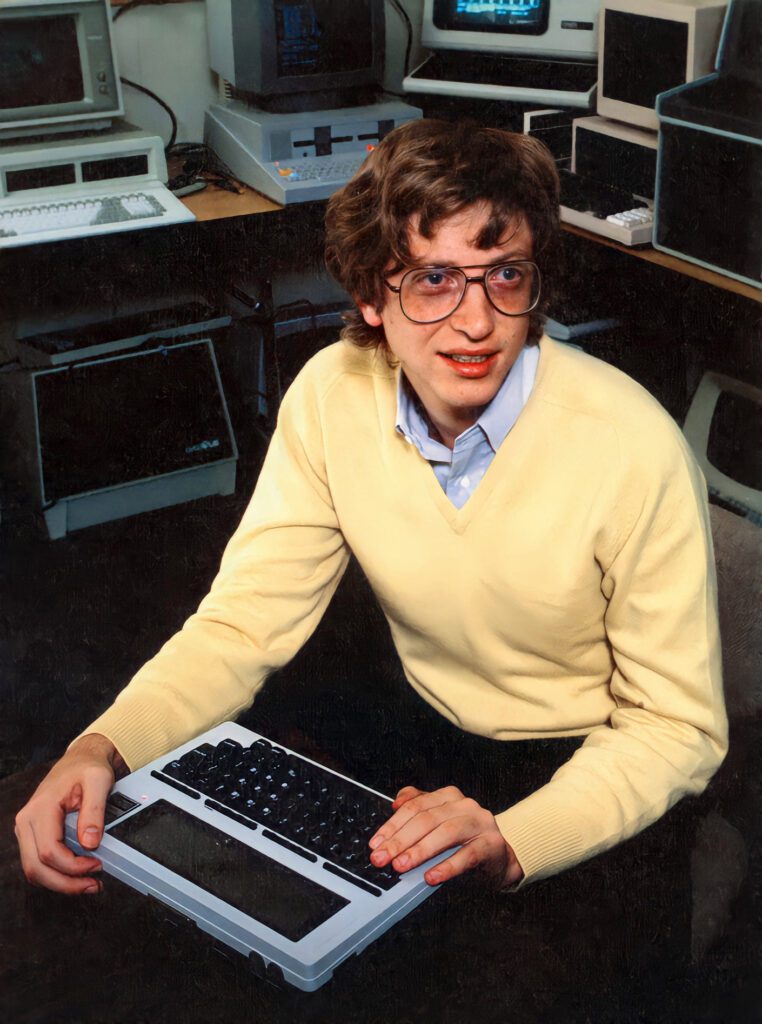
Navigating Rivalries and Partnerships
In the late ’70s, Microsoft inked a deal that would set its trajectory towards tech superstardom. IBM, the computing giant of the era, was venturing into personal computers and needed an operating system. The company had reached out to Microsoft after Gates’ mother, Mary Maxwell Gates, mentioned Microsoft to IBM’s then CEO, John Opel. Gates and Allen approached IBM and suggested that they use 86-DOS, an operating system developed by Seattle Computer Products (SCP). Microsoft made a deal with SCP and became the first exclusive licencing agent for 86-DOS, and later the owner.
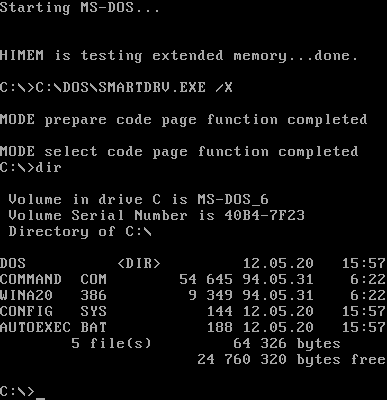
After the partnership with SCP, Microsoft delivered the operating system PC DOS to IBM for a one-time fee of $50,000. While the contract did not bring much capital, the deal brought about much recognition and prestige for Microsoft. Moreover, keeping rights to the software proved to be Gates’ masterstroke, as it allowed Microsoft to licence it to other PC manufacturers. MS-DOS, a version of DOS sold to manufacturers other than IBM, established Microsoft as a major player in the industry.
Yet the journey wasn’t devoid of rivalries. Apple, under Steve Jobs, was already making waves. The Macintosh, launched in 1984, showcased a graphical user interface, a stark contrast to Microsoft’s text-based system. This divergence set the stage for a fierce battle.
Windows to the World’s Computers
In 1985, Microsoft responded to the changing tech landscape and Apple’s Macintosh GUI with Windows. The GUI-based extension to MS-DOS was a bold step to captivate customers with its accessibility and simplicity. A year later, Microsoft struck a deal with IBM to create a whole new operating system to shock the markets. Though they were successful in creating the first version of the system, the partnership fell through because of creative differences.
With subsequent development and changing, the Windows operating system naturally grew out of the DOS; its Windows 95 iteration hid the DOS prompt completely by default. This change solidified Microsoft’s dominance in the PC realm. An intuitive interface, coupled with strategic marketing (who can forget the “Start Me Up” campaign featuring The Rolling Stones?), made Windows a household name.
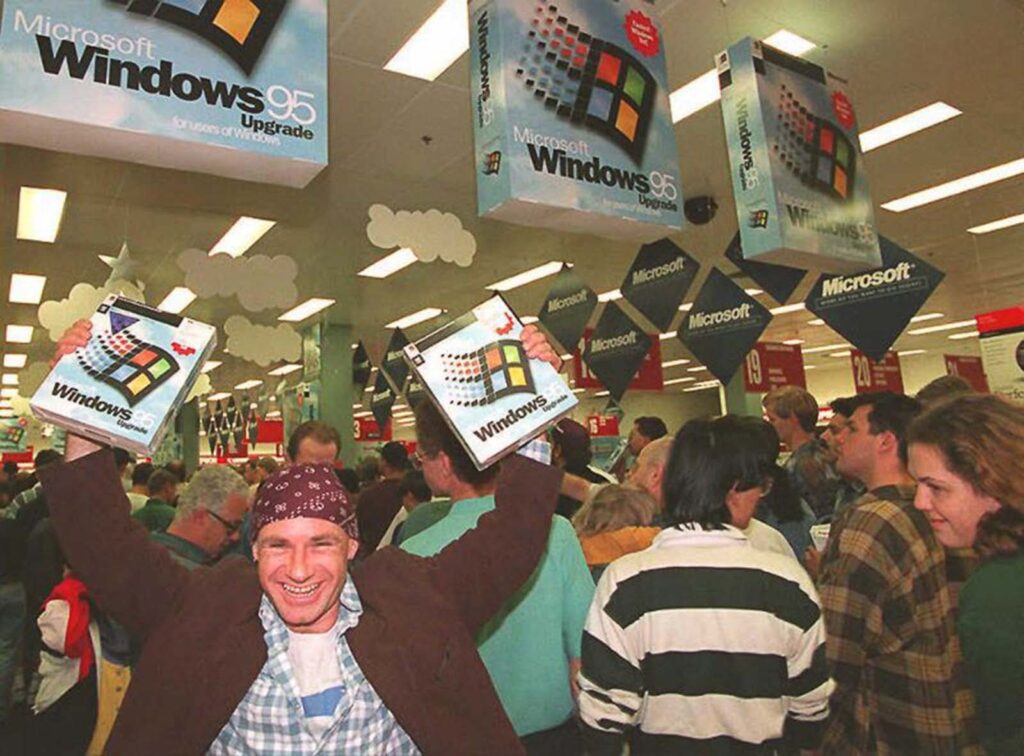
The subsequent versions—Windows XP in 2001, Windows 7 in 2009, and Windows 10 in 2015—saw Microsoft refining and expanding its OS offerings, continuously adapting to the ever-evolving tech landscape. Windows 8.1 was the last version of Microsoft released before Gates left the CEO position to John W. Thompson.
The Antitrust Ordeal
As the ’90s unfolded, Microsoft’s influence was undeniable. But with power came scrutiny. The tech giant found itself at the centre of a massive antitrust lawsuit, with allegations of monopolistic practices. At this point of success, Microsoft had installed more than a million MS-DOS devices; they were taking over the software industry by dominating operating systems, applications, peripherals, and even book publishing.
“Our strategies and energies as a company are totally committed to Windows, in the same way that we’re committed to operating-system kernels like MS-DOS and Xenix. We’re also saying that only applications that take advantage of Windows will be competitive in the long run,” Gates said regarding using Windows to dominate the industry.
The Federal Trade Commission began an inquiry in 1990 about Microsoft abusing its monopoly in the operating system market. After the investigation closed, the U.S. Department of Justice, bolstered by support from competitors like Netscape, Sun Microsystems, and Oracle, took on Microsoft in another legal battle that lasted years.
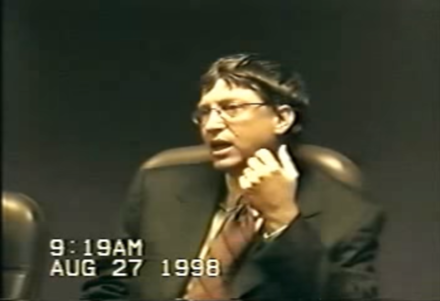
The case, which centred around the bundling of the Internet Explorer (IE) browser with the Windows OS, was both a legal and PR challenge for Gates and his team. Microsoft stood strong and defied the claims of monopoly, stating that IE and Windows were intrinsically linked due to innovative measures. Additionally, they affirmed that IE was only a feature of Windows and not a separate product.
While the company managed to avert a breakup, they still lost the case and were charged with violating multiple sections of the Sherman Antitrust Act. It was a wake-up call and marked a shift in Microsoft’s strategy and public perception. In Microsoft’s support, a large group of economists alleged that antitrust laws stifled innovation and stunted the success of domestic firms on a global level.
Beyond Software: Gates’ Philanthropic Pivot
As the millennium dawned, Gates began transitioning from the realm of binary codes to broader global challenges. In 2000, he stepped down as Microsoft’s CEO, paving the way for his longtime friend, Ballmer, to take the reins. This move wasn’t a retreat, but a shift in focus.
Along with being a tech genius, Gates was also known as one of the greatest philanthropists. He has made a number of personal donations to academic institutions like MIT, Harvard’s SEAS, and Stanford. Despite Microsoft’s rising success in the 1990s, Gates remained increasingly humble and donated a good amount of its stock to create the “William H. Gates Foundation”.

Following his step-down from the CEO position, Gates and his wife, Melinda, combined three family foundations and established “The Bill and Melinda Gates Foundation”. It channeled the vast wealth Gates had amassed into health, education, and poverty alleviation. Over a decade after its creation, it became known as the world’s wealthiest charitable foundation.
The foundation has been working to abolish diseases like malaria, polio, and AIDS. During the COVID-19 outbreak, it partnered with Gavi, a vaccine alliance, to provide vaccines to developing countries. It has also championed education reforms and access to information for low-income US students. All these measures prove Gates commitment to embarking on a mission to “improve the quality of life for individuals around the world.”
Epilogue: Beyond Windows and Walls
Bill Gates’ life story is more than just a chronicle of building the world’s most influential tech company. It’s a testament to the power of vision, tenacity, and adaptability. From a schoolboy in Seattle fiddling with early computers to a global philanthropist, Gates’ journey teaches us that with passion, perseverance, and a touch of genius, it’s possible to not just envision change but to also drive it.
Gates commitment as a transformational icon teaches many rising entrepreneurs to become risk-takers in their journey towards success and innovation. Dropping out of Harvard and then navigating the highs and lows of the tech industry at a young age, Gates is an inspiration and encouragement for many wishing to go down the same path.
As we stand amidst rapid technological advancements, Gates’ legacy serves as a beacon, reminding us that while technology can be transformative, it’s ultimately human vision and values that shape our shared future.

